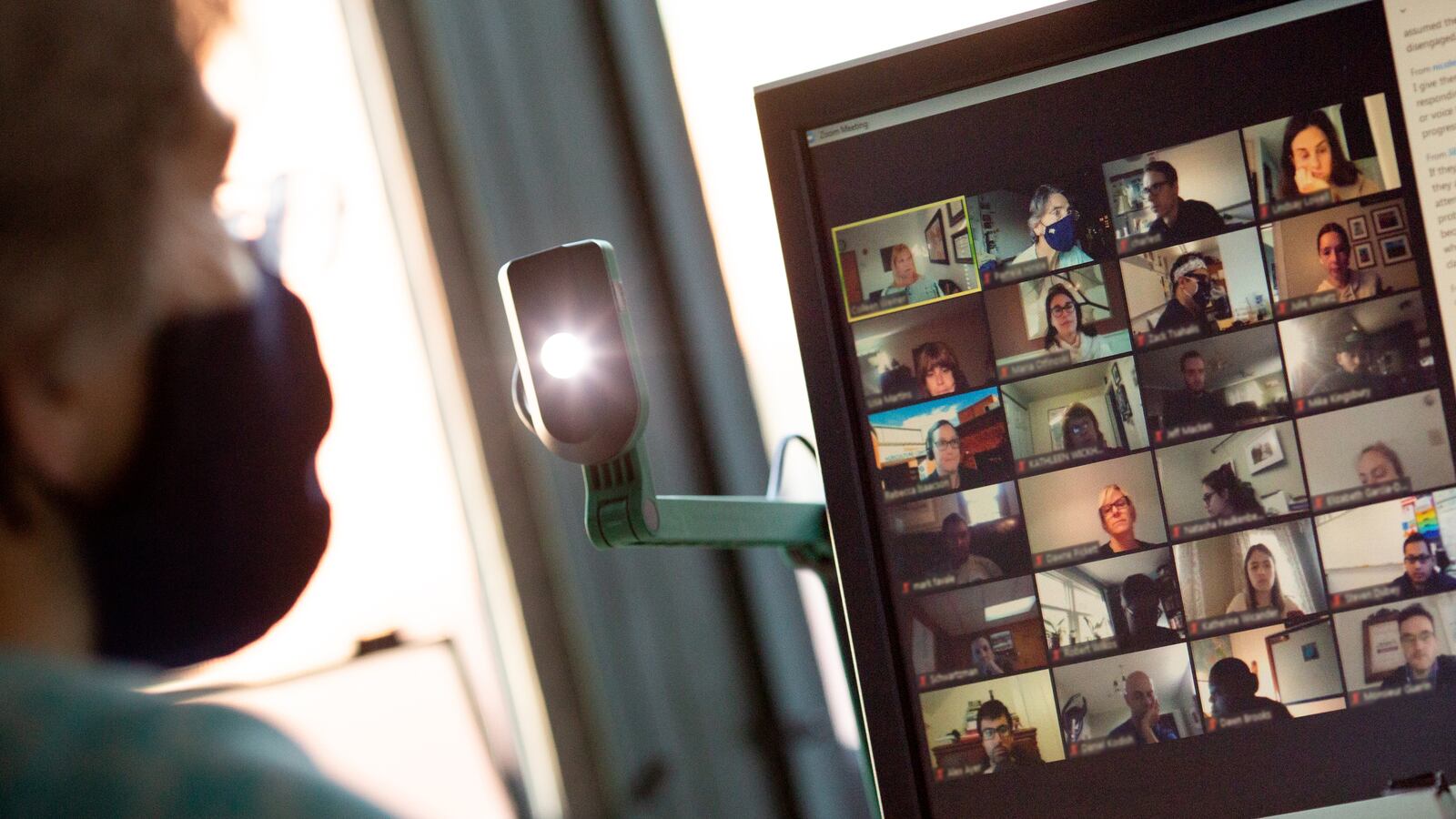A year ago, as the country was thrust into remote schooling, I found myself thrown unwittingly — and uncomfortably — into the role of “expert.” For the past decade, I’ve been a champion of online learning as I taught in and led online schools. And yet, while I worked around the clock offering webinars to teachers about the possibility of community online, I was struggling.
Once, as I wrapped up a television appearance exuding optimism about remote school, my then almost one-year-old climbed onto my lap for a virtual “baby and me” and promptly unplugged the monitor. The next room over, my then 3-year-old fumbled with the mute button in her newly virtual preschool.
The truth is, this past year was an educational disaster, marked by learning loss and wild inequity. Schooling in America was never meant to be online for all, with little training or preparation for educators.
Like so many parents, I rejoice that more and more schools are opening for in-person instruction. Children need their schools, and working parents need our children out of the home. No online learning evangelist should suggest this was an experiment worth having.
Let’s not make it worthless, either.

When I first started in this field, much online learning was self paced, featuring uninspired message boards and video-on-demand. An online learning skeptic myself, I questioned whether community could exist online, but I figured I’d test that assumption by running student life at Stanford Online High School — a role many thought was actually a joke.
In that role, I saw that we could build community intentionally. Many students from around the world thrived in virtual debate clubs, assemblies, and even movie nights that accompanied their real-time academic seminars. What I learned is that online learning is not for everyone, but it is fantastic for some.
Over the course of 2020 and into 2021, I have worked with well over a thousand teachers across the country and the world looking to sharpen their skills teaching online. They saw a rise in student stress, disconnection, isolation, and mental health challenges among students learning online. Amid their frustration, they also reported that introverted students were suddenly their strongest class participants. First-person reports from teachers and families alike point to benefits of online instruction for some Black students and students with ADHD.
Clearly, online learning works best when students and families have chosen it to meet their specific needs. Done well, and especially in cases where families can opt in, online learning can mean connection and expansion of opportunity. I’m thrilled to hear that, according to a Rand Corporation survey, about one in five American public school districts is somewhere on the path toward launching a virtual schooling option after the pandemic.
For most students, though, the more appropriate role for online learning is providing targeted experiences that meet their specific needs.
In the program I now lead, the Malone Schools Online Network, students log in from their own school buildings to join live, online seminars to study subjects not offered at their high schools, like LGBTQ literature, medical bioethics, or Arabic.
I work with brick and mortar independent schools, where resources are often abundant, but we don’t need abundance to do online schooling well. Online education can help schools share resources efficiently, offering courses or services they could not otherwise provide. Imagine a world in which all students could access high-quality online education to meet a particular interest or need — but also socialize in-person with other children or connect from a physical classroom, eliminating some of the darkest moments of “Zoom school” this year.
Set up that way, online learning can breed democracy and help students develop their own identities. I have seen students benefit from being “in class,” sometimes for the first time, with someone from a wildly different place — literally and metaphorically. Especially in more homogenous schools, online learning expands horizons for students and broadens our notion of community.
Just as students encounter differences online, so too do they sometimes meet the first classmate who has ever shared an aspect of their identity. I have seen an aspiring computer scientist encounter her first female STEM teacher, and a young woman typically known as a “math girl” in her school blossom in a language class with peers from other schools who did not know her reputation.
So how do we get there? It will take some collaboration, and a willingness to accept two realities at once: that much of this year’s online learning was painful and ineffective, and that we may be better equipped than ever to use online learning to reach some students who would benefit from it.
With so many classrooms already set up for hybrid learning, schools could find one talented teacher able to work virtually with students from another, less-resourced school. Amid the calls for tutoring to help fill education gaps, let’s follow the lead of some students and districts to create small-group tutoring online with the right teacher for those students, no matter their location. Or picture this: two teachers of the same course, in the same state, following the same standards, could co-teach, bringing together a rural and an urban classroom.
This spring, pulling up in a preschool carpool line, unbuckling car seat straps, and entrusting my children to their teachers felt like a dream come true. I know millions of parents feel the same way. I will never again take for granted sending my children to a school building; I feel privileged and grateful every day I can.
But I’m still more excited than ever about the emerging power and possibility of the virtual schoolhouse.
Claire P. Goldsmith is executive director of the Malone Schools Online Network, a national online learning consortium.



